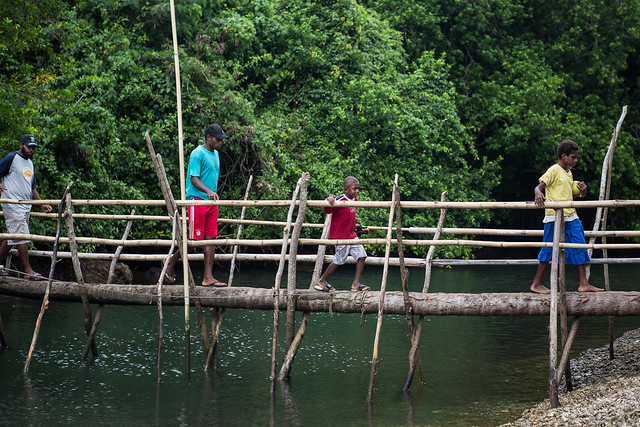
Where the ‘Indo-Pacific’ begins and ends, and what it looks like, depends partly on where you are. It’s a term that has quite subtle but different shades of meaning depending on your national or policy perspective. It is not, for example, a term welcomed by China. And the Indo-Pacific is as much a policy construct as it is a geographical reality, so how it evolves further will depend on how communities of interest in Australia and elsewhere construct and use the term over time.
The challenge for policymakers and others is deciding what the Indo-Pacific should become in the future. The relative absence of the Pacific islands in discussion of the Indo-Pacific draws attention to the need for that idea to evolve further.
Australian strategic policy towards the Pacific islands has been, over decades, quite instrumental in its focus—the islands have been seen as objects that can be shaped and used in various ways to enhance Australia’s strategic position. Offshore detention centres, to use a polite term, are a recent manifestation of this instrumentalism—the island countries are a means to our end. In this case, they’re places to put people we don’t want in Australia.
We’ve described defence cooperation in terms of understanding the environment where we might need to conduct military operations in the future, to shape police and military capabilities in ways that support Pacific island countries’ needs, but also to enable appropriate infrastructure and interoperable capability for the Australian Defence Force.
We’ve also wanted to shape defence and strategic policy thinking in those countries. Important projects such as the Pacific patrol boat program and its successor
Pacific maritime security program are not only concerned with providing much-needed capability but also with building a world view about the nature of that strategic environment.
The
2013 defence white paper was the first Defence document to use the term ‘Indo-Pacific’. One idea behind the Indo-Pacific as a framework for thinking about Australia’s strategic environment was that it returned our focus to an older, more traditional framing of our strategic environment—the archipelago to the north.
That white paper, with the idea of the Indo-Pacific as an emerging strategic community, had as a central question: what sort of Indo-Pacific community can we build and how should that community govern itself? This frame tried to establish the idea that all countries have a stake in the Indo-Pacific and its future and that there was much greater benefit to all in some form of strategic order management that was rules based and collaborative.
This is a very different question from that of how the Indo-Pacific strategic system might be bifurcated between the US and China.
China’s Belt and Road Initiative is an enormous and blunt force that’s reshaping infrastructure across the Indo-Pacific and beyond, including the Pacific islands. It’s being seen as—and feels like—a crisis: a slow-moving one that’s gathering pace and is not the sort of crisis that we’ve had to deal with in the past. But it isn’t the only economic and political force operating in that region; nor is it, when one considers the intensifying effect of climate change, perhaps the largest. But it, more than any other, has heightened anxiety in Australia about our role and position in relation to the Pacific island states. A particular focus for policymakers has been the question of what it might mean for our strategic and security interests if China were to establish a military presence in this part of the world as an extension of its infrastructure engagement.
There’s a danger of responding in a way that reinforces the idea that the Pacific islands are only a site for potential great-power competition, or that they should be seen simply as being within our ‘
sphere of influence’, as then–foreign minister Julie Bishop said last year. This is the policy approach that sees the Pacific islands primarily as a means to some larger strategic end, rather than as participants in a diverse Indo-Pacific community still in formation.
Australian strategic thinking needs to step beyond seeing the Pacific islands in an instrumental way and as an arena for future potential conflict. Perhaps the Indo-Pacific idea gives us the opportunity to rethink our construction of this environment in Australian strategic discourse. This might allow a more productive long-term framing of the Indo-Pacific idea in the context of the Pacific islands, along with a more expansive view of strategic challenges, such as climate change, rather than seeing these countries merely as an arena for an emerging competition between major powers.
 Print This Post
Print This Post